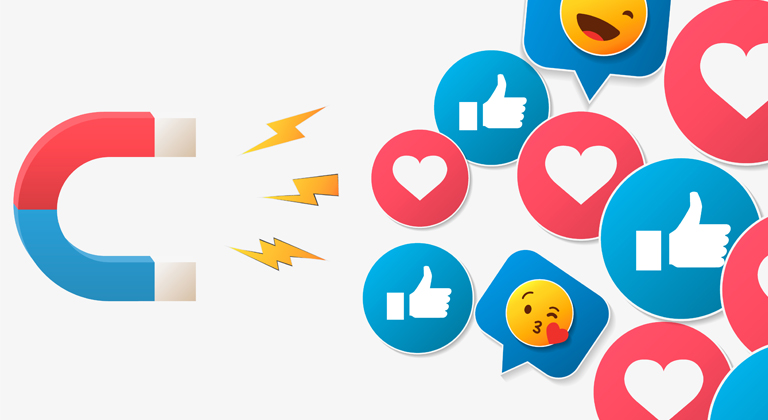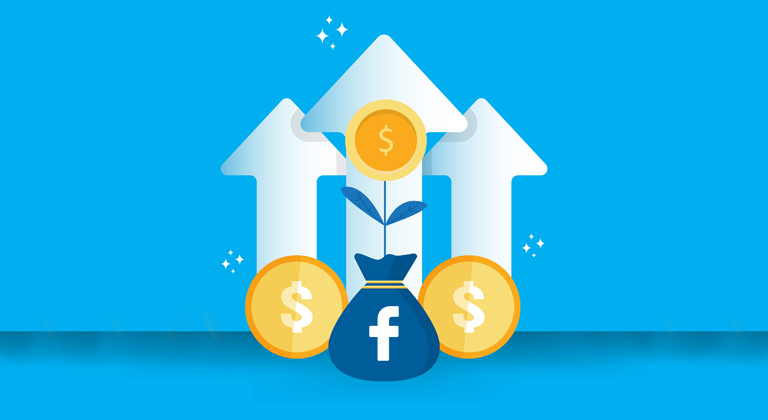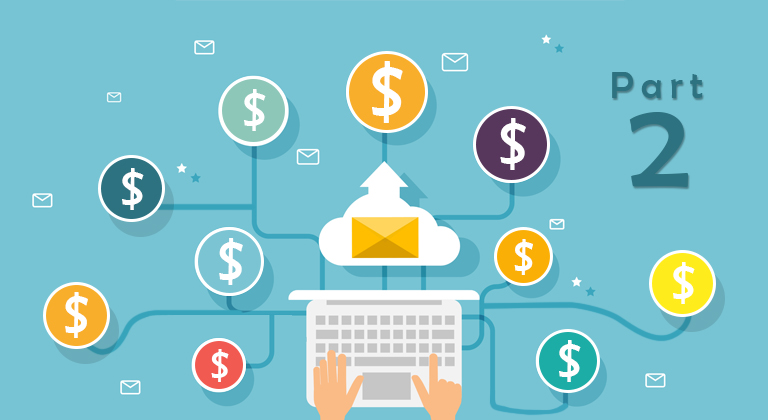How can you refresh a Facebook ad campaign?
As we’ve said many times in this space, advertising your book is an essential step in self-publishing success, but it is not something you can just set and forget. No matter how well your Facebook ad campaign performs initially, the sad and inevitable reality is that eventually, its performance will begin to decline. Since stubbornly letting a faltering ad continue to run is just a waste of money, you really need to monitor your campaigns for signs that your advertisements are getting stale and then take immediate action.
The first step is determining the possible reasons for the decline of your ad’s performance, and then once you have an idea on that, you can figure out the best way to fix it. In today’s blog, Ginger has a number of suggestions on doing both of those things. The good news is that you don’t always have to pull a previously winning ad completely, but you’ll often need to at least make some tweaks in order to refresh it enough to get it to start performing again.
When you finally figure out how to launch a Facebook ad campaign that actually works, it can be really exciting. It’s like a whole new level of achievement for self-published authors. Not only have you written and published books that people actually buy – but now you’ve figured enough out how to be able to turn a profit advertising them to strangers!
But that excitement can fade after a few months, when you might start noticing the profit you originally made so easily slowly diminishing over time. I speak from experience. When I launched one recent campaign in February, it made $1,200 in profit over my advertising costs and my “baseline” sales (you can learn how to calculate your baseline in this post.)
Yet in May, that profit sunk to just a few hundred dollars – and if the trend continued, it wouldn’t be long before the ad wasn’t making any profit at all!
It’s incredibly frustrating, but it’s something all advertisers have to deal with – even if they’re not selling books, like we are. The same challenges and obstacles occur no matter what you’re selling, and one of the secrets of turning writing into a career is figuring out how to overcome this problem.
What’s the problem?
The first step towards fixing this problem is identifying it. Where is your previously-profitable advertising campaign falling short?
There are generally three main problems you might encounter:
- Your Cost-Per-Click has skyrocketed up
- Fewer people are clicking on your ads
- Fewer people are buying your books
Any of these can cause your campaign’s profitability to come crashing down.
For example, in the campaign I was having problems with, my Cost-Per-Click rose from $0.11 at the start of the campaign (woot!) to $0.18 by the time I reached May. This meant that even though I’d increased my advertising spend from $20 a day to $30, I ended up getting the same number of clicks, because they were 39% more expensive.
One of the reasons my Cost-per-Click increased was because of the second problem – fewer people were clicking on my ads in the first place, driving up the price.
In March of this year, I had a click-thru rate of 8.75% – meaning nearly nine out of every 100 Facebook users who saw my ad actually clicked on it. By May of this year, that had dropped to 5.84% – a decline of around 44%. Even though I was getting just as many impressions, fewer people were taking action as a result of them!
Finally, I used Attribution Tags to track my book sales. Now, even though they don’t track every sale accurately – especially when you write in a series – they do help give a good indication of which direction your advertising is going in. After checking my figures, I found that I’d sold fewer than half the number of books in May as I had done in March. Likewise, the amount of sales I was getting over my “baseline” (which are generally sales driven by your advertising, even though you can’t track them) had declined by a similar amount.
In short, I had fewer people clicking on my ads, and those that did bought fewer books – and the trend suggested that the problem was only going to get worse!
What’s causing the problem?
If you’ve read this far into the article, I suspect you might be experiencing problems like this, too – so let’s get to work. After identifying exactly what’s going wrong, it’s time to diagnose any number of things that could be causing the problem.
Here are the likely offenders:
- Ad Fatigue: If your ads have been running for any length of time (mine had been going since February, for example) there’s a likelihood that your target audience may have seen them multiple times, leading to ad fatigue. When Facebook users become overly familiar with an ad, they’re less likely to click on it. This could be one of the reasons why your Cost-per-Click and Click-Thru rate are suffering.
- Audience Saturation: When you first launch an advertising campaign, Facebook might cheerfully tell you that your ads could reach an audience of millions. In fact, though, your total reach is often determined by your budget – and if you haven’t refreshed your target audience or expanded your targeting options in a while, it’s possible your ads are reaching the same people repeatedly. Eventually, this can lead to a saturation point at which the audience blanks out your ads entirely – meaning even fewer of them click on them. A good way to gauge this is to check on the Frequency of your advertising campaign. If it’s anything above 3, it means most of your audience has seen your ad at least three times; and they’re probably blind to it by now.
- Ad Relevance and Quality: One of the main causes of ad fatigue and audience saturation is static creative – as in images and copy for your ads that you haven’t changed in a while. You need to make sure that your ad creative and copy remain interesting for your target audience, otherwise they’ll just start to ignore them.
- Increased Competition: Not every decline in performance is your fault! Over time, more and more authors might have entered your niche, leading to increased competition for ad placements. That means you might be spending the same budget that you did previously, but because of the tougher competition you’re having to pay a higher premium for the same digital real estate.
- Seasonal or Market Factors: Finally, you might find your ad performance impacted by something else beyond your control – seasonal or market-specific factors that influence consumer behavior. Romance authors often describe the holiday season as “Smutmass” because they see such a boost in sales as people unwrap Kindles and eReaders. Likewise, summer is a great reason for authors if they publish “beach reading” novels. These factors can impact the effectiveness of your ads and result in fluctuations in your profitability that are completely outside of your control.
So, what can you do about it?
Once you’ve considered all the possible causes for your decline in campaign performance, it’s time to address them. Here’s a list of things you could experiment with to improve your profitability.
- Create some new ads: You don’t need to abandon your campaign entirely. You can try creating new ad variations with different visuals and copy to combat ad fatigue. You don’t need to remove or pause your existing ads, but by adding new ones you get to present fresh content to your audience, and test different approaches to discover what resonates best.
- Expand your audience: You can also experiment with expanding your target audience or refining your targeting options in the Ad Sets for your campaign. This can include adding new lookalike audiences, expanding the options in the detailed targeting options, or turning on Facebook’s own expansion options. This will help you reach brand new users who may be more receptive to your ads.
- Optimize your ads: It’s a little advanced, but Facebook offers a variety of options to test one version of your ad campaign against another. If you’ve run into a decline in ad performance, take the opportunity to review your ad creative, copy, and your product pages on Amazon to ensure they’re compelling, relevant, and deliver on the expectations of your target audience. If you’re confident enough to experiment with A/B, you can compare different elements within identical campaigns to identify the most effective combinations.
- Do some competitive analysis: There’s no question that more and more authors are turning to Facebook to promote their books. While this has driven up prices, and made competition for impressions a lot tighter, it also offers you an opportunity to research other author’s strategies and ads so you can figure out what works well, and how to differentiate yourself. Finding unique ad formats or targeting specific niches within your market help you stand out from the competition.
- Keep monitoring your ad performance metrics: If nothing else, keep doing what you’re doing. By tracking your click-through rates, engagement rates, and conversion rates, you’re at least learning to understand your Facebook ad campaign and how changes you make effect it. Analyze this data to make data-driven decisions to optimize your future campaigns.
That last point is key. Facebook advertising requires constant monitoring, testing, and optimization to make sure it’s delivering. By staying proactive and adapting your strategies based on data and insights, you can hopefully improve your profitability over time.
That being said, remember that experimentation is one of the most important parts of this process – and failure is baked into experimentation. You’ll have to have the courage to try new approaches and refresh your campaigns even knowing that there’ll be no guarantee of improvement. Sometimes getting things wrong is the only way to learn how to get things right – and those mistakes can be expensive!
But ultimately, the goal is to get and keep your advertising campaigns at a level at which they easily pay for all the costly mistakes you had to make in optimizing them – and continue paying well into the future.












1 Comments